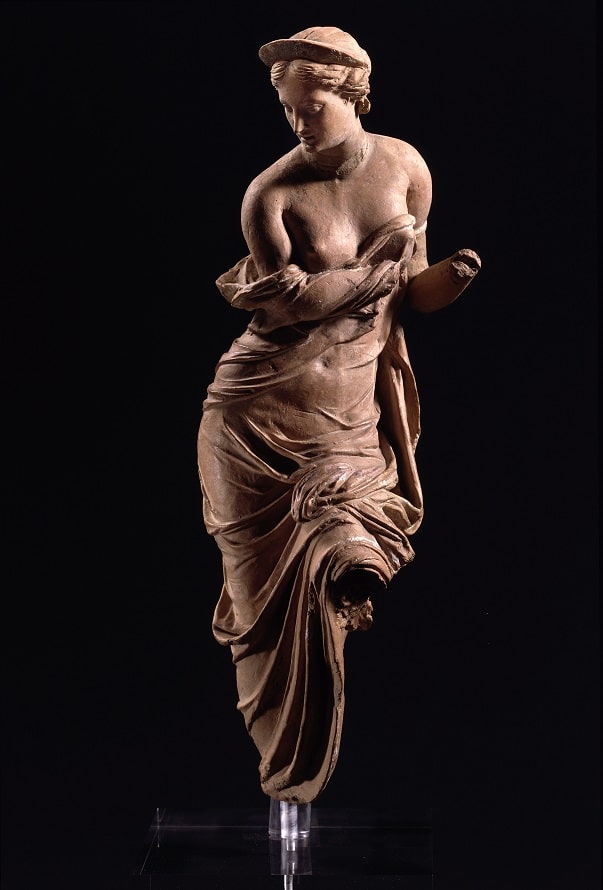Clay figurines were a widespread mass product in antiquity, but they always included artistically crafted and valuable individual pieces. Many of the colourfully painted figures look almost as if they had been cut out of life. In the 19th century, they were dismissed as mere decoration, but today we know that in ancient Greece they played an important role in people’s everyday lives. With 56 selected exhibits, the Collection of Classical Antiquities provides an insight into the diverse world of ancient clay figurines, but also into its otherwise hidden rich holdings of this genre. By focusing on their intended use, new perspectives on this often underestimated medium are opened up at the same time.
Image above: Female seated figures, 510-480 BC, © Staatliche Museen zu Berlin, Antikensammlung / Johannes Kramer
Although clay figures have been mass-produced from hollow moulds (matrices) since the 7th century BC, there is a wide range: from uniform, cheap mass products to very individual small masterpieces that can certainly hold their own alongside the small-format stone sculpture. Contributing to the wide range of variation, but also to the charm of the pieces, is the colourful painting, which has often been amazingly well preserved. Since the late 4th century BC, expensive colours such as blue and gold, but also pastel shades such as pink and light green were used. In this way, the clay figures give an impression of the colour spectrum predominant in sculpture, which is lost in the large white marble sculpture of today.

When the so-called Tanagra figures appeared around 1870 – clay statuettes of elegant young women wearing coats and hats found in the Greek city of Tanagra – they triggered a veritable “terracotta hype”. In view of a great demand, forgeries soon appeared, some of which can still be found unrecognised in museums today. For the “Tana Graeans” met the taste of the bourgeoisie of the time and were quickly regarded as antique equivalents to small-format porcelain figures, such as were set up for decoration in the salons. However, the antique terracottas by no means had such a purely decorative function. Rather, the contexts in which they were found in graves, sanctuaries and houses indicate that one and the same figure could be used in very different contexts. The clay figures probably almost always had a cult significance, for they were consecrated into shrines on certain occasions in life, in the case of girls especially on the occasion of marriage and motherhood. In private houses they were probably erected as part of domestic cults for the protection of the family. In necropolises, they were mainly found in the graves of young deceased people and were therefore probably regarded as substitutes for objects that would have been donated to the gods during rites on the occasion of important stages on the way to adulthood.

Among the 56 exhibits on display in the exhibition are a large number of objects from the rich holdings of the Collection of Classical Antiquities that have rarely or never been shown before. They are supplemented by selected highlights from the permanent exhibition, such as the famous statuette of the so-called Aphrodite Heyl, and individual loans from the Museum of Decorative Arts and the Museum of the Ancient Near East of the National Museums in Berlin. Berlin. The exhibition focuses on the production, use and reception of ancient clay figures. The pieces are presented together with ceramics and marble statuettes and are thus reintegrated into their historical context of use.

“Class and Mass. The World of Greek Clay Figurines” focuses attention on a long genre that provides an insight into many aspects of daily life in ancient Greece and beyond: From religion to burials to social role models.

The exhibition is curated by Valentin Veldhues and Frederik Grosser, volunteer and research assistant at the Collection of Classical Antiquities, respectively. An accompanying publication to the exhibition will be published by Michael Imhof Verlag.
WHEN?
Friday, 7 October 2022 – Sunday 2 July 2023
COSTS?
Entrance free
WHERE?
Am Lustgarten, 10178 Berlin-Mitte






